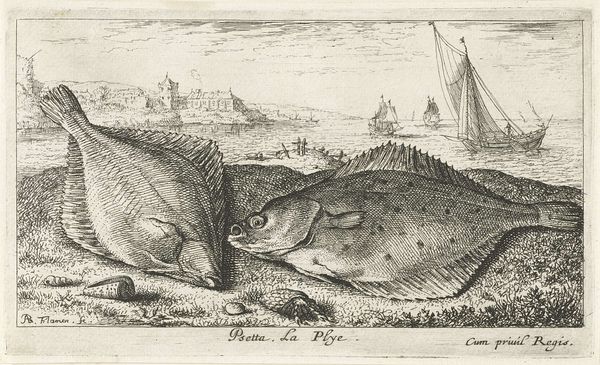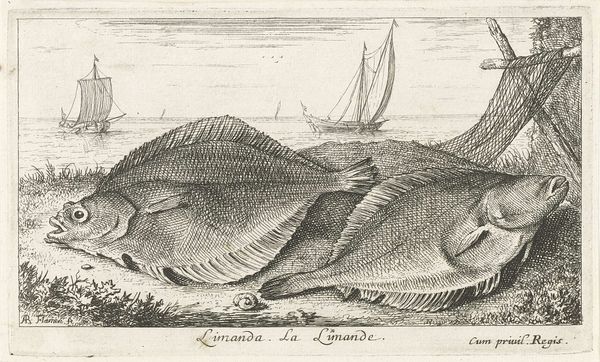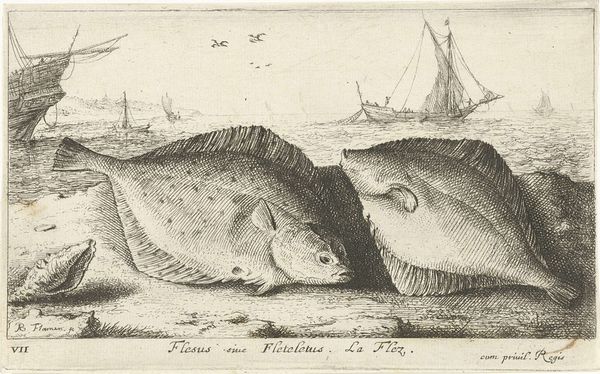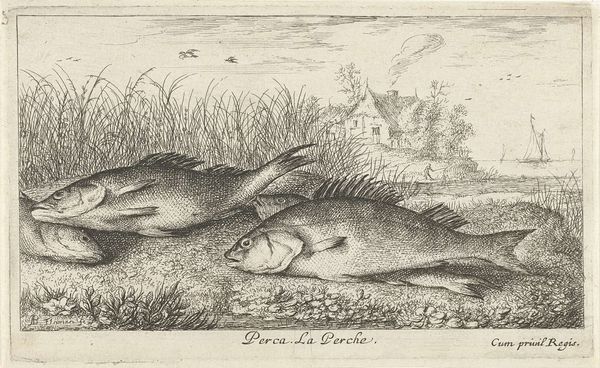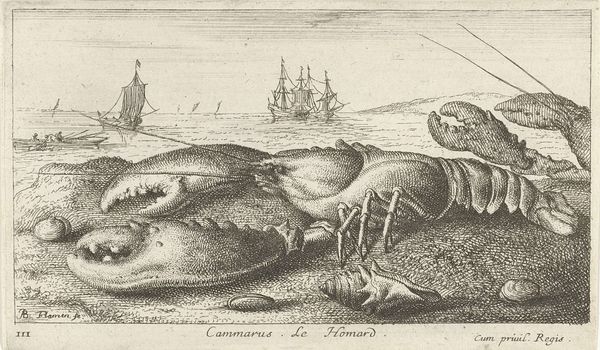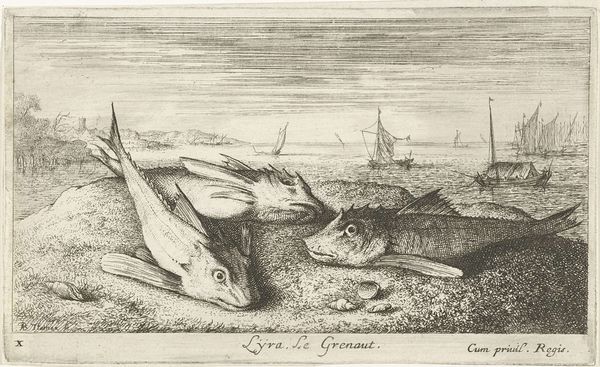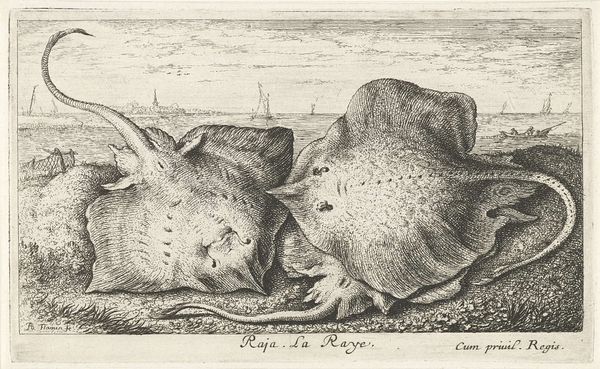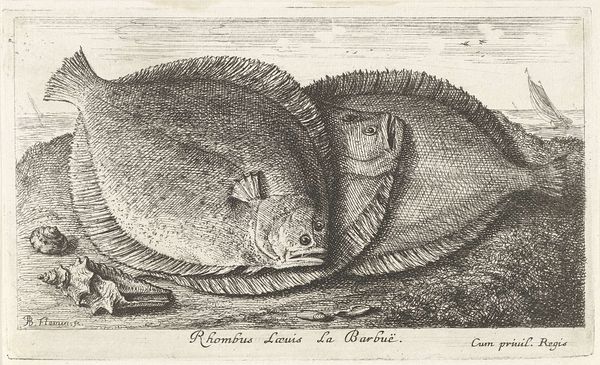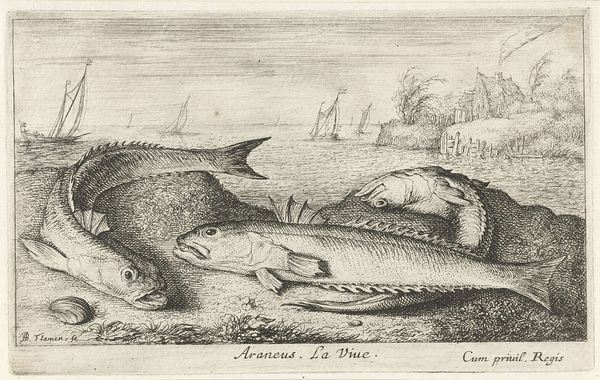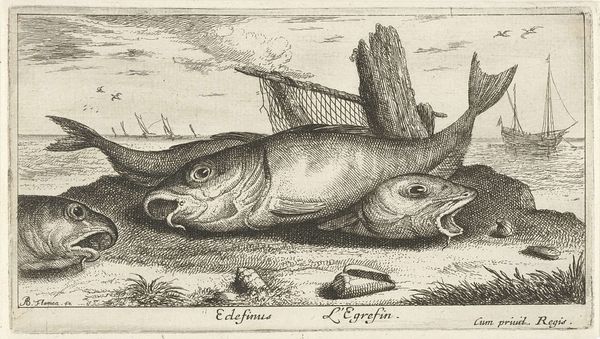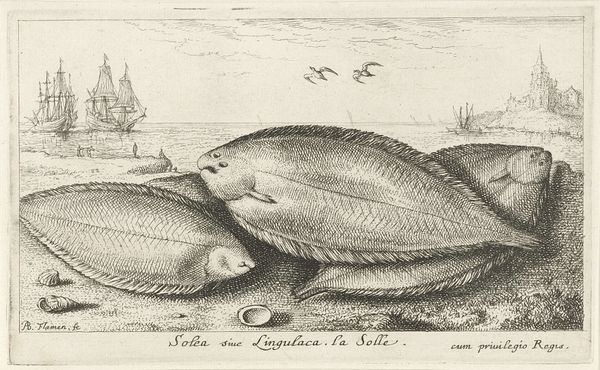
print, engraving
# print
#
pen sketch
#
pencil sketch
#
old engraving style
#
landscape
#
pen-ink sketch
#
pen work
#
genre-painting
#
engraving
#
realism
Dimensions: height 105 mm, width 178 mm
Copyright: Rijks Museum: Open Domain
Editor: This is "Two Plaices on the Beach," an engraving by Albert Flamen from 1664. The detail is really incredible. I'm immediately struck by the strange yet serene atmosphere...the fish eyes seem so mournful. What do you see in this piece? Curator: Indeed. Consider the placement of these plaices on the shore, seemingly stranded. Fish, particularly in 17th-century Dutch art, often served as symbols. What might these particular fish, so clearly displayed, represent to contemporary viewers? Editor: Hmm, maybe a commentary on abundance, considering the Dutch Golden Age and their booming fishing industry? Or could it be about mortality, considering they're beached and seemingly lifeless? Curator: Both valid interpretations. The image certainly reflects Dutch prosperity, but note the religious undertones so common then. These aren’t just fish; they could be stand-ins for larger concepts—lost souls, perhaps, caught between worlds, their bulging eyes symbols of spiritual awareness or desperation. The beach itself, a liminal space, emphasizes this in-between state. Does that perspective shift your view at all? Editor: That definitely adds another layer! It makes the background details, like the boat, feel less like a simple seascape and more like a representation of a journey, maybe even passage to the afterlife. Curator: Precisely. The recurring presence of marine life and coastal imagery suggests that Flamen aimed to evoke cultural memory, speaking to shared human experiences—loss, abundance, faith—connecting viewers through these powerful symbols. Editor: It's fascinating how everyday objects like fish can hold so much symbolic weight. I’ll definitely look at other genre scenes differently now, considering their potential layers of meaning. Curator: It's a fruitful avenue. Symbols aren’t static, they evolve, and looking for the cultural memory embedded in them reveals so much about the artist and their world.
Comments
No comments
Be the first to comment and join the conversation on the ultimate creative platform.
